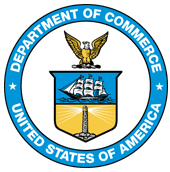Chapter 7. Linking Performance Plans to Organizational Goals
Strategic management of human capital requires that performance management systems link individual, team, and work unit performance to organizational goals and desired results. This requirement is a key provision of the Department of Commerce’s (DOC) performance management system, which requires that supervisors link individual employees’ performance plans to organizational goals.
To ensure that employees’ plans are properly linked to organizational goals, managers should start by reviewing and becoming familiar with the Department’s strategic goals and objectives. They need to understand the “big picture.” At a minimum, this requires that managers gather enough information to answer the following questions:
- What are the strategic goals outlined in the Department of Commerce Strategic Plan? To achieve its mission, the Department identifies several strategic goals. Each of these goals is supported by objective, quantifiable, and measurable performance goals that cover all of its constituent bureaus, as required by the Government Performance and Results Act (GPRA) of 1993. Reviewing and understanding these strategic goals will provide managers the necessary framework within which to develop work unit goals and create individual performance plans. Each organizational unit of the Department ultimately supports one of the Department’s strategic goals, and managers should be able to clearly identify the relationship of the work in their unit to one of the Department’s strategic goals.
- What are the specific performance goals established for your program area as outlined in the Department’s annual performance plan? Goals in the Department’s annual performance plan define what will be accomplished during a fiscal year. These goals describe the incremental progress toward achieving the general goals and objectives in the strategic plan. Performance plan goals are usually more specific and may be more output-oriented than the general goals found in the strategic plan. Since performance plan goals should be used by managers as they direct and oversee their programs, these are the goals to which employee performance plans should be linked.
- What performance measures are already in place? Managers should be aware of the measurement systems (both internal and external) that can be accessed for information on performance, including measures for determining progress toward achieving GPRA goals and customer satisfaction surveys.
Once the above information is reviewed, managers should focus on identifying the accomplishments that the work unit must achieve. Accomplishments are the products or services resulting from work unit activities. The work unit consists of all of the employees directly supervised by the same first-line supervisor. When the work unit is identified, the supervisor can begin the process of cascading the Department’s goals down to the work unit level. To do this, the following steps should be taken:
- Review the specific goals and objectives identified in the Department’s annual performance plan. These should have been identified in connection with the supervisor’s review of the Department’s strategic goals.
- Identify which agency performance goal(s) the work unit can affect. Often, work units may perform work related to one Commerce goal, but in some situations, they may affect more than one broadly-stated goal.
- Determine what product or service the work unit produces or provides to support the Department’s accomplishment of its goals. Clearly tying work unit products and services to organizational goals is key to this process. If a work unit is performing services or generating products that do not affect organizational goals, this situation should be reviewed and analyzed. The analysis may result in eliminating the product or service.
When supervisors have completed the actions described above, they can develop performance plans for individual employees by cascading Commerce goals down to their work unit goals, and ultimately, into individual performance plans that describe individual performance expectations that are aligned with Commerce goals as well as work unit goals. Click on this link to see an illustration of Cascading Goals.
Following the steps laid out above, managers can establish a clear linkage between the goals of their work units and the strategic goals of the Department. Once the unit’s goals have been identified, the manager can proceed to develop individual performance plans with specific requirements and measures that focus on individual accomplishments linked to the goals of the organization.
Developing Performance Requirements and Measures
Performance Requirements
Once critical elements have been identified, managers should focus on specific performance requirements. This is done by analyzing the critical elements and identifying specific tasks or functions that contribute to successful performance in a critical element.
Measures
Once the performance element and requirements have been established, supervisors should develop individual performance measures for each critical element. Measures are the criteria used to determine how well employees perform in producing the products or services. Measures should be tied to organizational goals and should be expressed in terms of milestones, metrics, or outcomes. Good performance measures are “SMART.” That is, they are:
- Specific,
- Measurable,
- Agreed-Upon,
- Realistic, and
- Time-Framed.
General measures should be written in terms of quantity, quality, timeliness, or cost-effectiveness. For additional information click on the link above.
For additional information, please refer to the Department’s Strategic Plan and the Department’s Annual Performance Plan.
Reference: Office of Personnel Management’s (OPM) Handbook for Measuring Employee Performance, September 2001

